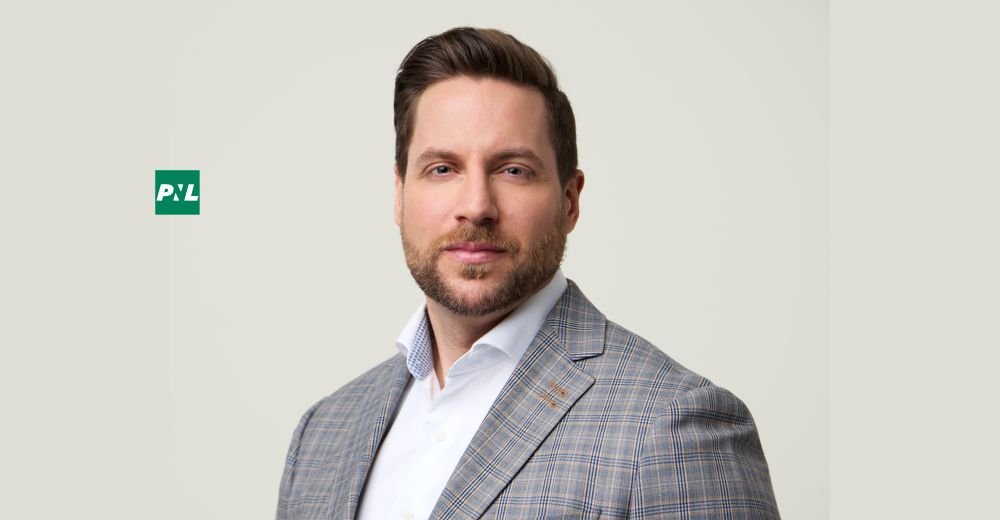In today’s drug development landscape, sponsors are seeking partners that can offer speed, data integrity, and accountability without the complications of managing multiple vendors. This is where Altasciences comes in. A contract research organization (CRO) and contract development and manufacturing organization that provides biotech and biopharmaceutical organizations of all sizes with a streamlined, comprehensive outsourcing solution for early-stage drug development. Its goal is to deliver an unparalleled experience that empowers clients to achieve critical decision-making milestones faster and more efficiently.
Altasciences calls its methodology Proactive Drug Development, an approach that manages each project as a cohesive journey rather than a series of disconnected stages. This holistic perspective enables the company to anticipate challenges and address them in parallel, effectively accelerating timelines by up to 40%.
Instrumental to this mission is Rob Sabelli, Co-Chief Operating Officer of Altasciences. Rob has over a decade of experience across quality assurance, client management, business development, and now operations. He works to connect operations and commercial teams, ensuring clear communication, strong accountability, and strategic focus. Under his leadership, Altasciences continues to deliver faster, more efficient solutions while keeping clients and employees at the heart of every decision.
Let’s delve into the interview details below!
Rob, before we dive into Altasciences, can you tell us a bit about your professional journey—what experiences shaped your path to becoming Co-COO, and what drives you as a leader today?
Growing up and being very much involved with sports, I was very interested in understanding the functions and mechanism of the body from an athletic perspective. That interest stayed with me through to university, where I studied Physiology—but when I landed a summer job as a quality assurance (QA) inspector at Charles River Laboratories, I fell in love with the business side of drug development. I spent almost three years in that role, kicking off my career. This time in QA helped me gain a deep knowledge of regulatory compliance, strengthening my analytical and critical thinking, and exposing me to the full operational landscape of a CRO.
From there, I transitioned into a client manager role, and this is where I came to fully appreciate the importance of cross-functional collaboration and the critical role quality plays in every aspect of drug development.
Eager to expand my knowledge, I transitioned into the commercial side of the CRO business, starting in Business Development as a Sales Executive, then moving into leadership as Senior Director of Business Development, and ultimately Chief Business Development Office, where I oversaw teams and shaped the commercial strategy.
Over my thirteen years at Altasciences, I developed a customer-centric mindset, deepened my strategic thinking, and gained invaluable market insight, working closely with operational leaders to help bridge the gap between what we promise clients and what we deliver.
I’ve always believed that bringing commercial and operational functions together under unified leadership leads to better alignment, more cohesive decision-making, and ultimately, stronger client partnerships. In my current role as Co-Chief Operating Officer, leading both business development and operations, I focus on fostering clarity, accountability, and strategic focus that drives sustainable growth, profitability, and satisfaction for both clients and employees.
What drives me most as a leader at Altasciences is the chance to shape a company that puts patients, clients, and employees at the heart of every decision. I’m passionate about building agile, empowered teams that solve complex problems and deliver smarter, faster, more integrated solutions. At the end of the day, I’m driven by impact—and by creating a culture where that impact is shared and lasting.
Looking back, what were some of the strategic turning points that defined Altasciences’ evolution into a fully integrated, mid-sized CRO and CDMO?
One of the most defining strategic turning points for Altasciences was when our CEO, Chris Perkin, joined the company in 2010. He brought with him a vision to evolve the company from a traditional early-phase clinical and bioanalytical CRO for the development of generic drugs, into a fully integrated, end-to-end drug development partner for novel therapeutics. This meant more than just expanding our service offering; it meant reimagining how those services could work together to expedite and simplify our clients’ drug development journey and experience.
The key to this evolution was our combined commitment to strategic acquisitions that brought complementary capabilities under one organization. But what truly transformed us was our focus on integration, not just expansion. We invested in harmonizing systems, aligning leadership, and building cross-functional teams that operate with a shared vision.
Seeing the same issues arise over and over, and understanding the clients’ growing need for speed, flexibility, and fewer handoffs pushed Chris, and all of us at Altasciences, to break down traditional silos and create a model that delivers continuity across all phases of drug development. That mindset continues to drive us today, and it’s why we remain focused on evolving with our clients, not just around them.
In a crowded field, how does Altasciences maintain its differentiation while expanding its global footprint and service offerings?
What sets us apart is our integrated approach. Rather than treating development as a series of isolated steps managed by separate CRO and CDMO partners, we operate as a unified organization. This means that we handle the process as a cohesive whole, from end to end. By uniting preclinical, clinical, bioanalytical, and manufacturing, using smart technology to cut down on busy work, and relying on scientists who stay close to the details, we keep studies moving forward with clarity, consistency, and confidence.
Our scientific and operational teams are in constant collaboration, sharing their insights and data to build a cohesive roadmap, anticipate potential roadblocks, and proactively resolve them before they ever become obstacles.
With this approach, we have removed the typical gaps in communication across disconnected stages or vendors, and in turn, our clients experience virtually no handovers. We’ve developed a proprietary internal database, Ask Albert, that captures key client information and makes it easily accessible throughout all phases, departments, and locations. It’s a truly powerful, streamlined, and coordinated model designed to accelerate progress and reduce complexity.
How does the company strike the right balance between innovation and operational excellence—especially as expectations for speed and quality continue to rise?
We do that in a few ways. Tell Us Once™ is our commitment to seamless communication and transparency, and links back to our proprietary database that I spoke about earlier (Ask Albert). As a client’s molecule progresses, so does their data, eliminating the need to repeat information at each stage. This reduces administrative burden for the client and ensures timely, reliable information transfers throughout the program, allowing our teams to work with clients effectively.
As I mentioned, our drug development model is innovative, but what sets us apart is our level of integration. What this integration allows is full visibility into a client’s program, so that we can proactively identify potential roadblocks and create efficiencies, such as using parallel processing to shorten timelines. For example, we can initiate first-inhuman trials faster by coordinating small-scale formulations with clinical conduct, or we can even begin clinical planning while preclinical studies are still underway. Each program is supported by a dedicated manager who oversees timelines, contracts, finances, and a proprietary central scheduling platform that allows us to maximize efficiencies when scheduling programs.
This level of integration comes from the very top, and we imbue it into every aspect of the organization, including our structure. All scientific and operational teams report directly to me and my Co-Chief Operating Officer, Steve Mason. With Steve and me working hand-in-hand, internal silos that typically slow down progress are removed, and teams from across various stages of drug development can work as one.
What initiatives or technologies is Altasciences investing in today that you believe will set the tone for the next decade of clinical research?
AI is transforming our industry fast, giving us the ability to leverage decades of scientific and clinical insights to decode biomarker patterns, and interpret complex pharmacodynamic, pharmacokinetic, and quality assurance datasets with speed and precision. These insights help identify strong lead candidates, improve progression beyond Phase I, and anticipate potential manufacturing delays for faster, more informed decision-making throughout the whole development process.
We’ve already adopted some vetted AI tools and are actively exploring new initiatives to enhance productivity, such as systems that process large clinical datasets, smart dashboards that streamline workflows, and machine learning tools that reveal valuable insights hidden in complex datasets while improving workflows by efficiently directing tasks to the most suitable teams at the right time.
We’ve also recently partnered with Evidence Matters to develop RegulatoryFlow, an AI-powered CSR generation tool trained on years of study data. By unifying documents, reducing variability, and streamlining workflows, RegulatoryFlow optimizes regulatory writing. Our teams can then provide testing and feedback, to ensure faster, higher-quality documentation and let ours experts focus on study design and strategy.
What’s your vision for where Altasciences will be five years from now, and how are you aligning the team to get there?
Five years from now, we see Altasciences continuing to grow alongside our clients and the evolving drug development landscape—recognized not just for scientific excellence, but for how seamlessly we adapt to new challenges. Our vision is to remain the go-to partner for end-to-end development that’s faster, more flexible, and truly collaborative.
We’re staying focused on what’s worked: investing in technology, talent, and cross-functional integration to keep simplifying the path from discovery to commercialization. By enhancing real-time decision-making and fostering a culture of innovation and accountability, we’re staying aligned with client needs now and into the future.
What has being a leader at Altasciences taught you about leadership, both professionally and personally?
Leading at Altasciences has been an incredibly rewarding journey. I’ve come to realize that leadership isn’t about always having the right answers; it’s about creating the kind of environment where great ideas can surface and grow.
Over time, I’ve seen how much clarity and trust really matter. In a fast-moving industry like ours, it helps to have a clear direction, but it’s just as important to give people the freedom and support to move with confidence. That means listening closely, being honest in how I communicate, and staying flexible when things change.
Personally, leadership has taught me the value of humility and resilience. The most meaningful progress often comes through challenges, whether it’s navigating change, making tough decisions, or rallying a team during uncertain times. I’ve come to see leadership as a continuous learning process, grounded in empathy and driven by a genuine commitment to the people you serve.
What advice would you give to the next generation of leaders aiming to build impactful, agile organizations in the life sciences space?
My advice to the next generation of leaders in life sciences is to lead with purpose, stay curious, and never lose sight of the human impact behind the science. This industry is evolving rapidly: technology, regulatory landscapes, and patient expectations are all changing in real time. Building a strong, adaptable organization means viewing change not as a setback, but as a chance to evolve and do things differently.
Agility doesn’t have to mean more systems and processes; it comes from culture. So don’t be afraid to foster an environment where diverse perspectives are welcomed, where it’s safe to challenge the status quo, and where continuous learning is part of the very company’s DNA. Surround yourself with people who are smarter than you and empower them to take ownership.




